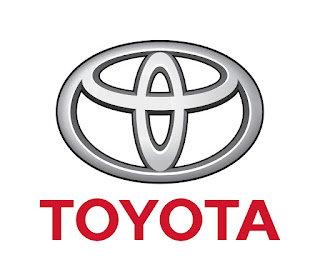Toyota, one of the world’s leading automobile manufacturers, has a rich history that extends far beyond its innovative vehicles. Central to its global identity is its logo and branding, which have evolved significantly over the decades. This article delves deep into the history of Toyota’s iconic logo and branding, exploring how it has become one of the most recognizable symbols in the automotive industry.
Early Beginnings: From Looms to Automobiles
Toyota’s story began not with automobiles but with looms. The company’s founder, Sakichi Toyoda, was an inventor who revolutionized the textile industry with his automated looms. In 1933, his son, Kiichiro Toyoda, expanded the business into the burgeoning automobile industry, founding Toyota Motor Corporation in 1937.
During its early years, Toyota’s branding was relatively simple and functional. The name “Toyoda,” written in kanji characters (豊田), adorned its products. However, as the company began to expand its horizons, it sought a more modern and international identity.
The Shift to “Toyota”
One of the first significant branding changes occurred in 1936. To mark its venture into automobiles, the company held a public competition to design a new logo. This competition attracted over 27,000 entries, highlighting the importance of this rebranding effort.
The winning design featured the word “Toyota” in katakana script (トヨタ). The shift from “Toyoda” to “Toyota” was not merely aesthetic. There were several reasons behind this change:
- Phonetic Simplicity: “Toyota” was easier to pronounce and had a more harmonious sound.
- Numerological Significance: In Japanese culture, the number of strokes used to write a word can hold symbolic meaning. “Toyota” requires eight strokes, a number associated with prosperity and good fortune.
- International Appeal: The name “Toyota” had a more universal feel, aligning with the company’s aspirations to reach a global audience.
The Birth of the Iconic Three Ellipses Logo
In 1989, as Toyota celebrated its 50th anniversary, the company introduced the logo that would become synonymous with its brand: the three ellipses design. This emblem marked a turning point in Toyota’s branding journey and has remained its primary logo ever since.
Symbolism of the Three Ellipses
The three overlapping ellipses are rich with meaning, reflecting Toyota’s values and vision:
- Customer-Centric Approach: The two inner ellipses represent the heart of the customer and the heart of the company. Their overlapping symbolizes mutual trust and a strong relationship.
- Global Expansion: The larger outer ellipse encircles the inner shapes, signifying the world and Toyota’s global reach.
- Innovation and Excellence: The overall design conveys a sense of motion, unity, and progress, underscoring Toyota’s commitment to technological advancement and quality.
The logo’s minimalist design also ensured versatility. Whether displayed on vehicles, advertisements, or digital platforms, the emblem remained instantly recognizable and effective across all mediums.
Evolution of Toyota’s Branding
Over the years, Toyota’s branding has undergone several refinements to keep pace with changing consumer expectations and market trends. Let’s examine the key phases of this evolution:
1. Post-War Resurgence (1940s-1950s)
Following World War II, Toyota faced significant challenges, including resource shortages and a devastated economy. Despite these hurdles, the company rebuilt itself and began focusing on mass-producing vehicles for a domestic audience.
During this period, Toyota’s branding was functional and utilitarian. The company’s name, written in simple, bold typography, reflected its no-nonsense approach to rebuilding.
2. International Expansion (1960s-1970s)
As Toyota expanded into international markets, it recognized the need for a cohesive and appealing global brand. The introduction of models like the Corolla and the establishment of production facilities abroad signaled this shift.
Toyota began emphasizing reliability, affordability, and efficiency in its branding. Advertisements featured straightforward messaging, showcasing Toyota as a dependable choice for families and businesses.
3. The Premium Shift (1980s-1990s)
The late 20th century saw Toyota targeting premium markets, leading to the creation of the Lexus brand in 1989. This move allowed Toyota to diversify its offerings and establish a presence in the luxury automobile segment.
The introduction of the three ellipses logo in 1989 coincided with this strategic shift. The logo’s elegance and modernity aligned with Toyota’s vision of innovation and quality, helping the brand appeal to a broader audience.
4. Sustainability and Innovation (2000s-Present)
In recent decades, Toyota has positioned itself as a leader in sustainability and cutting-edge technology. The launch of the Prius in 1997 marked the beginning of a new era, with Toyota pioneering hybrid technology.
This commitment to sustainability is reflected in Toyota’s branding. Campaigns emphasize eco-friendliness, innovation, and social responsibility. The company’s visual identity remains consistent, with the three ellipses logo symbolizing adaptability and forward-thinking.
The Role of Color in Toyota’s Branding
Color has played a crucial role in reinforcing Toyota’s brand identity. Over the years, the company has primarily used red, silver, and black in its logos and promotional materials. Each color carries specific connotations:
- Red: Represents passion, energy, and a customer-focused approach.
- Silver: Symbolizes sophistication, quality, and technological advancement.
- Black: Conveys authority, elegance, and reliability.
The consistent use of these colors has helped Toyota establish a strong visual identity that resonates with audiences worldwide.
Branding Beyond the Logo
While the three ellipses logo is the centerpiece of Toyota’s branding, the company’s identity extends beyond this symbol. Toyota has invested heavily in creating a cohesive brand experience through:
- Advertising: Toyota’s advertisements emphasize reliability, innovation, and customer satisfaction. Iconic campaigns like “Let’s Go Places” encapsulate the brand’s adventurous spirit and commitment to enabling mobility.
- Slogans: Over the years, Toyota has used memorable slogans, such as:
- “Oh, What a Feeling!”
- “Moving Forward”
- “Let’s Go Places”
- Customer Engagement: Toyota’s focus on customer-centricity is evident in its initiatives, such as loyalty programs, community outreach, and interactive digital experiences.
The Global Impact of Toyota’s Branding
Toyota’s branding has played a pivotal role in its global success. Today, the company operates in over 170 countries and regions, with a reputation for reliability, innovation, and quality.
The three ellipses logo has become a universal symbol of trust and excellence, transcending cultural and linguistic barriers. Whether in bustling urban centers or remote rural areas, the emblem is instantly recognizable, embodying Toyota’s commitment to improving lives through mobility.
Conclusion: A Legacy of Excellence
The history of Toyota’s logo and branding is a testament to the company’s adaptability and vision. From its early days as a textile manufacturer to its position as a global automotive leader, Toyota has consistently evolved its identity to reflect changing times and customer expectations.
The three ellipses logo, introduced in 1989, encapsulates Toyota’s core values of trust, innovation, and global reach. Coupled with its thoughtful use of color, memorable slogans, and customer-focused initiatives, Toyota’s branding has cemented its place as one of the most iconic and enduring in the world.
As Toyota continues to pioneer new technologies and expand its horizons, its logo and branding will undoubtedly remain central to its journey, inspiring generations to come.


Leave a Reply